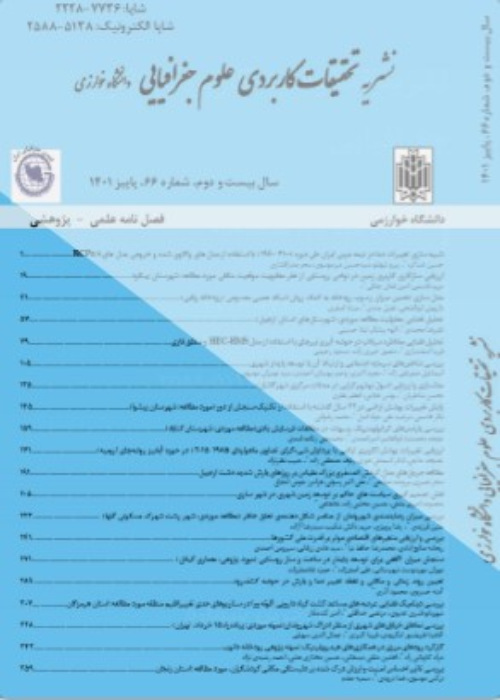Spatiotemporal Response of MODIS Derived Vegetation index to climatic condition Case study: Kohgiloyeh O Boirahmad Province of Iran
The plant community in an area is the most sensitive indicator of climate. A visual comparison of climate and vegetation on a global scale immediately reveals a strong correlation between climatic and vegetation zones and this relationship, of course, are not co-incidental. The main object of this study is to reveal the spatiotemporal association between climatic factors andvegetation Cover (NDVI) incorporate MODIS and TRMM product in Kohkiloyeh O Boirahmad province of Iran. So that the in this paer we use MOD13Q1 of MODIS product as NDVI layer for study area. MOD11A2 as landsurface temperature and 3B43 TRMM as meanmonthly accumulative rainfall for study area during 2002 to 2012 in 0.25° spatial resolution also were used as climatic factors. We use the correlation and cross-correlation analysis in 0.95 confident level(P_value =0.05) to detection the spatial and temporal association between the NDVI and 2 climatic Factor(LST and rainfall). The results indicated that during winter (December to March) the spatial distribution of NDVI is highly correlated with LST spatial distribution. In these months the pixels which have the high value of NDVI are spatiallyassociated with the pixels which have highest value of LST (6 to 14C°).As can be seen in table 1. Season the spatial correlation among NDVI and LST is so high which is statistical significant in 0.99 confident level in winter. In transient months such as May, October and November,(temperate months in study region ) the spatial correlation among NDVI and LST is falling to 0.30 to 0.35 which is not statistical significant in 0.95 confident level. Finally in summer season or warm months including Jun to September, we found the minimum spatial association among the NDVI and LST.. In temporal aspect we found that the maximum correlation between NDVI and LST simultaneously appears and not whit lag time. The spatial correlation of NDVI and TRMM monthly accumulative rainfall was statistical significant in spring season (April to Jun) by 1 month lag time in remain months we don’t find any significant correlation between NDVI and rainfall.
- حق عضویت دریافتی صرف حمایت از نشریات عضو و نگهداری، تکمیل و توسعه مگیران میشود.
- پرداخت حق اشتراک و دانلود مقالات اجازه بازنشر آن در سایر رسانههای چاپی و دیجیتال را به کاربر نمیدهد.



